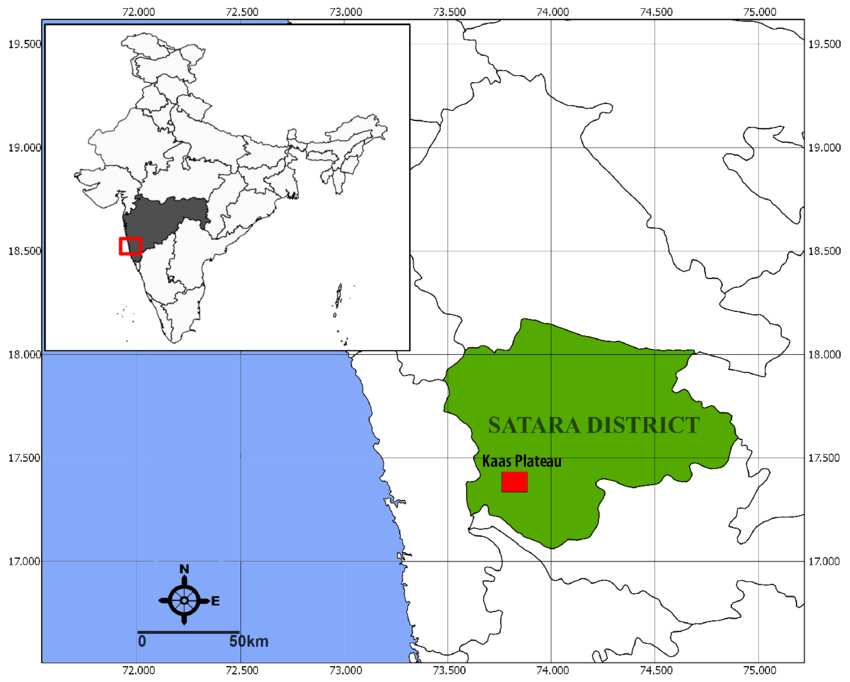Biodiversity & Environment
Climate Shifts in Kaas Plateau
- 17 Jul 2023
- 4 min read
For Prelims: Climate Shifts in Kaas Plateau, Holocene Epoch, Southwest Monsoon, National Centre for Earth Sciences, United Nations Educational, Scientific and Cultural Organization (UNESCO) World Heritage.
For Mains: Climate Shifts in Kaas Plateau.
Why in News?
A recent study conducted by the Agharkar Research Institute (ARI) and the National Centre for Earth Sciences has shed light on significant climate shifts in the Kaas Plateau during the Early-Mid-Holocene and late Holocene Periods.
- The researchers studied the sediments of a seasonal lake to understand and decipher the past climate of the Kaas Plateau.
What is Kaas Plateau?
- The Kaas Plateau, located in Maharashtra's Satara district, is a UNESCO World Natural Heritage Site and a designated biodiversity hotspot.
- Known as Kaas Pathar in Marathi, its name is derived from the Kaasa tree, botanically known as Elaeocarpus glandulosus (rudraksha family).
- The plateau have various seasonal flowers forming a floral carpet over the entire lateritic crust during August and September.
What are the Key Findings of the Study?
- Ancient Lake and Environmental Preservation:
- The present "Flower Wonder" of the Kaas Plateau is located on an ancient lake that dates back to the Early-Mid-Holocene period, approximately 8000 years ago.
- The seasonal lake has been preserved over a long time and provided valuable insights into the past climate of the region.
- Climate Shifts during the Early-Mid-Holocene:
- Around 8664 years ago, there was a change in the climate from freshwater to drier conditions with low rainfall.
- Pollen and diatom data indicated a major shift in the Indian summer monsoon activity during this time.
- Despite the drier conditions, there were intermittent humid periods suggested by a significant rise in the number of diatoms.
- Late Holocene Climate Changes:
- During the late Holocene, approximately 2827 years ago, there was a decrease in rainfall and a weakened Southwest Monsoon.
- Recent Environmental Impact:
- Over the last 1000 years, there is evidence of lake Eutrophication, indicated by the presence of high numbers of planktonic and pollution-tolerant diatom taxa.
- Eutrophication is the process of a water body becoming overly enriched with minerals and nutrients which induces excessive growth of algae or algal bloom, thereby, leading to oxygen depletion of the water body.
- Human activities, including agriculture and cattle/livestock farming in the catchment area, likely contributed to this environmental impact.
- Over the last 1000 years, there is evidence of lake Eutrophication, indicated by the presence of high numbers of planktonic and pollution-tolerant diatom taxa.
- Monsoon Intensity and Duration:
- The southwest monsoon intensified during the Early Holocene, around 8000 years ago.
- The northeast monsoon relatively weakened around 2000 years ago.
- It is likely that the 'Flower Wonder' of the Kaas Plateau existed for a longer duration, up to March-April, during the early–mid-Holocene (8000–5000 years), when the monsoon rainfall was more abundant, with more than 100 rainy days.







